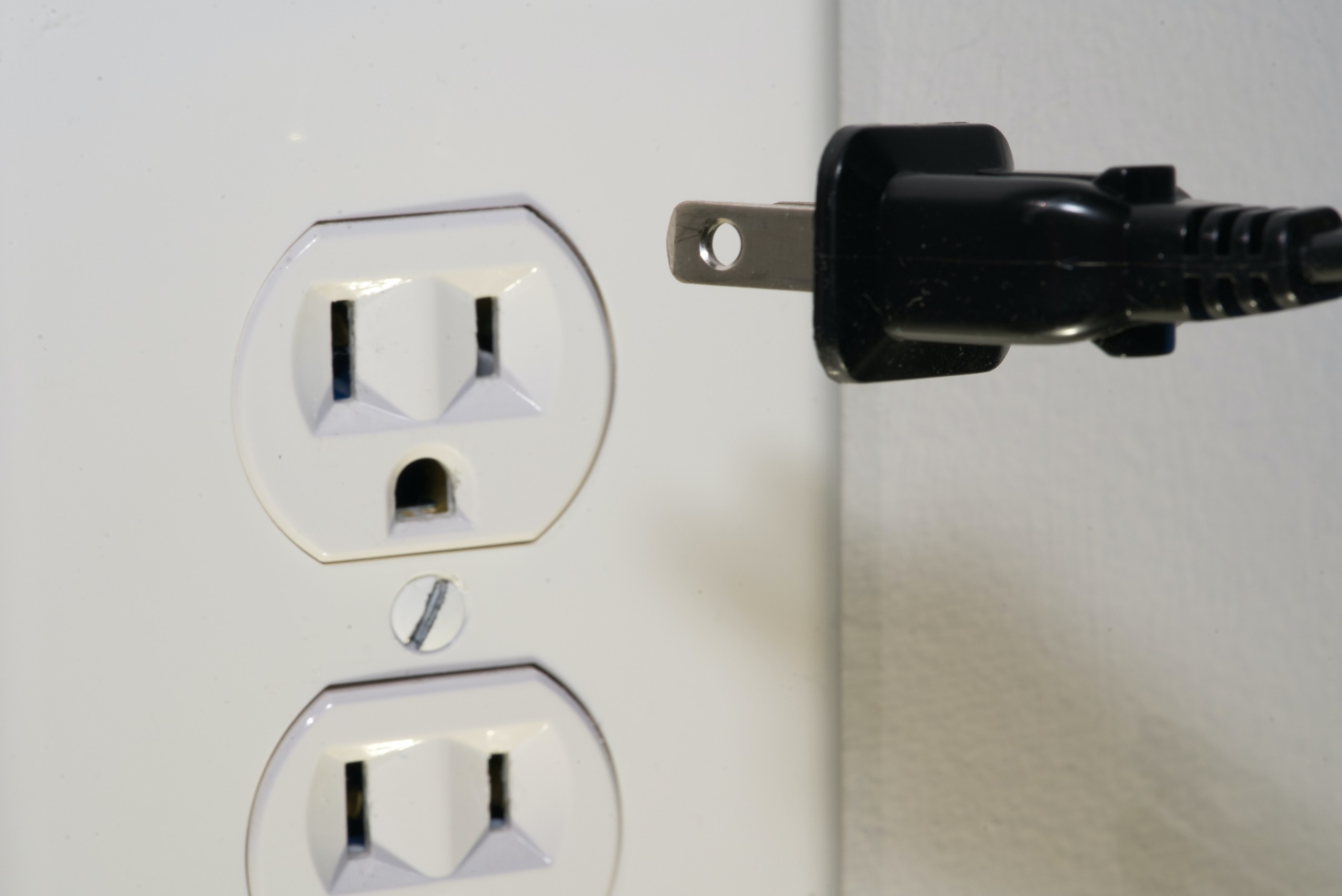Much of our daily lives involve various electrical appliances–from cooking and cleaning to work and entertainment. With all of these devices, you might find it difficult to find a single open outlet. Surge protectors and power strips help create more space to plug items in, but they allow for a greater risk of overloading the outlet. At the very least, overloaded outlets get hot to the touch; it’s quite likely that they will also spark and cause a house fire. You can prevent this from happening by understanding the maximum amount of power you should draw from a single outlet and staying well below that.
How much power is in each outlet?
Though there are industry standards for circuit capacities, you will need to check your breaker panel. There you will find the exact amperage for each circuit in your home. Be sure you’re checking the correct circuit since they may vary depending on location (circuits in the kitchen or laundry room will probably have higher amperages to account for the more significant amounts of power demanded by large appliances. In general, your circuits will have about 15-20 amps each.
How much can you plug into a single outlet?
Though each circuit has 15-20 amps, only about 80% of that power can be used at once, so you can assume that 12-16 amps of power are readily available. You may have noticed, though, that amps don’t measure the power in electrical appliances–it is measured by watts. Luckily the conversion is easy: amps x volts = watts. The standard outlet is 120V, so you can safely plug 1,440 watts into a 15 amp circuit without going over the 80% threshold. Simply add the watt requirements of the appliances you are plugging in and make sure they don’t exceed this amount.
Keep in mind that large appliances like an AC unit or oven use close to 1,000 watts on their own, so they should have a circuit dedicated solely to them. Lightbulbs have their wattages readily displayed, but for other appliances, you will need to either check the manufacturer’s sticker that is on it or find the owner’s manual.
How do you know a single outlet is overloaded?
There are a few key signs of an overloaded outlet. Tripped breakers, blown fuses, and flickering lights or appliances all indicate that you are overdrawing the power from that circuit. Unplug the appliances from that circuit. Try to distribute them better among other circuits. You should also have an electrician check the overloaded circuit for any damage.
Are power strips safe to use?
Power strips are great for giving you more outlets when you need to plug in lots of small devices, such as phone and laptop chargers, small lamps, etc. While you can safely plug multiple small items in, it’s always a good idea to calculate the wattage you’re using to ensure you don’t go over what the outlet can handle. You should never use a power strip to plug in larger appliances like microwaves or space heaters. Surge protectors have similar effects. It is fine to plug two surge protectors into the same outlet to ensure all your devices are protected; however, be sure to stay below the ~1,500-watt maximum.
One of the best ways to determine if you have the right amount of outlets and wiring in your home is to have a professional assessment. Call one of the master electricians from Promise Electric and ask for a general electrical inspection. The results of the inspection will help you to determine if you need any electrical upgrades or repairs in order to keep your family safe and your home protected.



